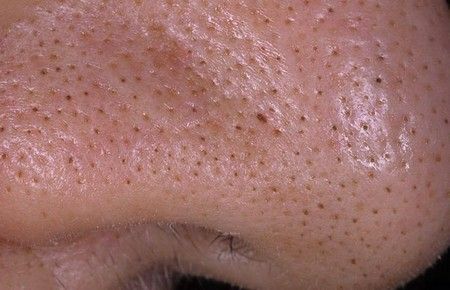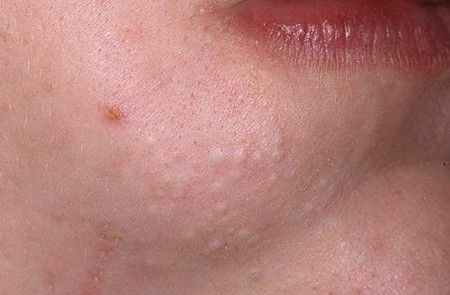The accumulation of dirt and dust, inadequate hygiene and diseases of the sebaceous glands - all this can provoke the formation of comedones. And despite the revolution in dermatology, the creation of modern highly effective skin care products, this problem is one of the most common in the world.

Basically, this disease affects people in their teens, but people older than 25 years are also no exception. There are comedones on the face, back, chest;they are able to spread rapidly throughout the body. Of course, they do not carry an immediate threat to human health or life, but they do cause a lot of trouble.
Mechanism of formation of
In the process of disruption of the hormonal background, as well as the nervous regulation of the sebaceous glands, a pathological change in the skin condition occurs. As a result, the intensity of sebum production increases, which contains a small amount of linoleic acid, and then the following occurs:
- , the process of keratinization of the upper layers of the skin, which are in contact with the hair follicles, is broken;
- these mouths acquire very small dimensions or completely close;
- as a result of sebum does not have the ability to go outside, accumulates and stretches the walls of the follicles.
Kinds of comedones
Comedones, photos of which can be considered a little lower, are an acne not inflammatory in nature. They are classified as follows: closed and open.
Open comedones or black dots
Open comedones are formed due to accumulation in the follicles of sebum, keratinized skin particles, destroyed cells of the epidermis, dust, as well as decorative cosmetics. As a result, a stopper is formed, which blocks the follicle.
Please note! The top layer of this cork can be seen with the naked eye - in the place of exit it has a black color, which is obtained as a result of oxidation of sebum mixed with dust and oxygen. It is for this reason that they are called black dots.
How open comedones look can be seen on this photo:

This kind of acne is the least dangerous, but thanks to a thin film that closes the exit site and is the least traumatic. Open comedones are most often formed on the nose, forehead and chin - in other words, in the so-called T-zone, where the production of sebum occurs most efficiently. Sometimes they can form even in the auricles.
Closed or white comedones
White comedones can appear in all people, regardless of age and sex. But most often they suffer, of course, teenagers. Unlike open closed comedones have no way out, so they accumulate under the skin and can exist there for several years. The person thus will not test absolutely any disturbance as they do not provoke neither an itch, nor morbid sensations.
Closed comedones can appear on the forehead, chin, cheeks, in the cheekbones, in the temporal region and on the back;sometimes in the upper part of the chest.
Closed comedones look like small white or yellowish hillocks that rise above the surface of the skin.
Important! Sometimes they can become inflamed;most often this is due to the fact that the patient is trying to squeeze them out, which can not be done categorically. As a result, an inflammatory process begins that will affect not only the comedon itself, but also the surrounding tissues, and as a result, purulent acne will appear-unaesthetic and painful. And they, in turn, are able to grow into boils and abscesses.
Locations of white comedones on the face can be seen on the following photos:


Causes of
In fact, not only the activity of hormones can lead to the formation of comedones. The reasons for the occurrence will be much greater.
- Disorders in the endocrine and nervous system: diabetes, persistent stress, insomnia, hypo- or hyperthyroidism, gonadal dysfunction.
- Features of physiology and skin type, small pore diameter, increased intensity of sebum production - all these are the causes of hereditary predisposition.
- If comedones appear constantly, then perhaps your diet is wrong - abuse of fatty and sugary foods, carbonated drinks, excess carbohydrates in the daily menu: lack of vegetable oils, fish, fruits and vegetables.
- Insufficient skin hygiene, low-quality cosmetics, long-term exposure to sunlight.
Recommendation! It is very important to regularly cleanse the skin, even if you do not use make-up cosmetics - the pores are still clogged with dust and particles of dirt, so use a cleanser twice a day - in the morning and in the evening.
- Harmful habits - smoking and frequent use of alcoholic beverages.
- Some medications may also provoke the formation of comedones.
- Residence or frequent exposure( work) in adverse environmental conditions, where in the air there is an increased content of ions of salts of heavy metals, carbon oxides or chemicals.
- On the back, comedones can appear due to the constant wearing of synthetic clothing that does not allow the skin to breathe.
Recommendation! Most often, the back is covered by comedones after the person sweats. Therefore it is very important in hot weather to rinse the body with water several times a day and be sure to take a shower after training in the gym.
Prophylaxis of
Prevention of comedones is very simple:
- wash daily using cleansers;
- never go to bed with cosmetics on the face;
- during the day, try not to touch the skin of the face with your hands;
- to minimize consumption of "unhealthy" food - fast food, fatty, sharp and flour products.
To prevent the appearance of comedones is much easier than to treat them, so follow the recommendations above and be beautiful!
